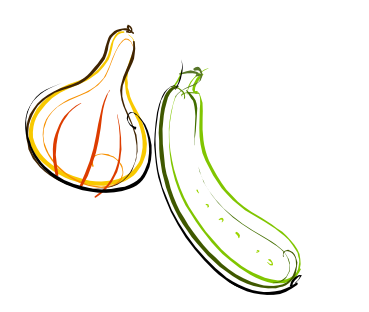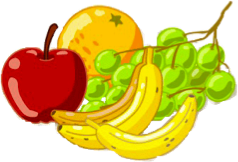Dietary Guidelines for Americans
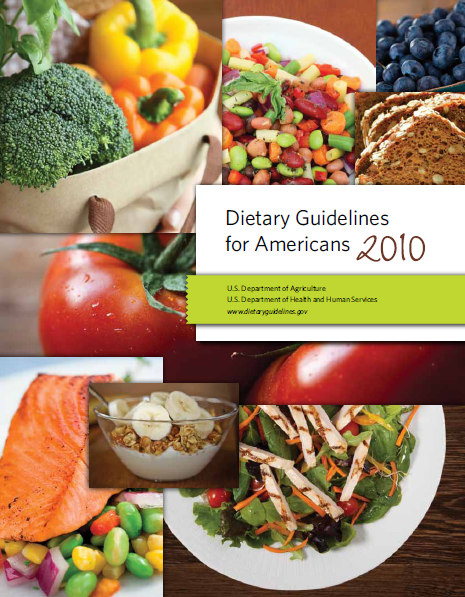 Every five years the Department of Health and Human Services (HHS) and the Department of Agriculture (USDA) issue a report containing nutritional and dietary information and guidelines for the general public over two years of age based on a review of scientific evidence. The aim is to provide advice to promote health and to reduce risk for major chronic diseases through diet and physical activity. A detailed description of the process and the most recent report can be found at http://www.health.gov/dietaryguidelines/2010.asp
Every five years the Department of Health and Human Services (HHS) and the Department of Agriculture (USDA) issue a report containing nutritional and dietary information and guidelines for the general public over two years of age based on a review of scientific evidence. The aim is to provide advice to promote health and to reduce risk for major chronic diseases through diet and physical activity. A detailed description of the process and the most recent report can be found at http://www.health.gov/dietaryguidelines/2010.asp
From the www.health.gov web site:
"The Dietary Guidelines for Americans, 2010, released on January 31, 2011, emphasize three major goals for Americans:
- Balance calories with physical activity to manage weight
- Consume more of certain foods and nutrients such as fruits, vegetables, whole grains, fat-free and low-fat dairy products, and seafood
- Consume fewer foods with sodium (salt), saturated fats, trans fats, cholesterol, added sugars, and refined grains
The Dietary Guidelines for Americans, 2010 include 23 key recommendations for the general population and 6 additional key recommendations for specific population groups, such as pregnant women. The recommendations are intended to help people choose an overall healthy diet."
Major Recommendations
Manage Weight
- Prevent and/or reduce overweight and obesity through improved eating and physical activity behaviors.
- Control total calorie intake to manage body weight. For people who are overweight or obese, this will mean consuming fewer calories from foods and beverages.
- Increase physical activity and reduce time spent in sedentary behaviors.
- Maintain appropriate calorie balance during each stage of life - childhood, adolescence, adulthood, pregnancy and breastfeeding, and older age.
Foods and Food Components to Reduce
- Reduce daily sodium intake to less than 2,300 milligrams (mg) and further reduce intake to 1,500 mg among persons who are 51 and older and those of any age who are African American or have hypertension, diabetes, or chronic kidney disease. The 1,500 mg recommendation applies to about half of the U.S. population, including children, and the majority of adults.
- Consume less than 10 percent of calories from saturated fatty acids by replacing them with monounsaturated and polyunsaturated fatty acids.
- Consume less than 300 mg per day of dietary cholesterol.
- Keep trans fatty acid consumption as low as possible by limiting foods that contain synthetic sources of trans fats, such as partially hydrogenated oils, and by limiting other solid fats.
- Reduce the intake of calories from solid fats and added sugars.
- Limit the consumption of foods that contain refined grains, especially refined grain foods that contain solid fats, added sugars, and sodium.
- If alcohol is consumed, it should be consumed in moderation - up to one drink per day for women and two drinks per day for men—and only by adults of legal drinking age .
Foods and Nutrients to Increase
Individuals should meet the following recommendations as part of a healthy eating pattern while staying within their calorie needs.
- Increase vegetable and fruit intake.
- Eat a variety of vegetables, especially dark-green and red and orange vegetables and beans and peas.
- Consume at least half of all grains as whole grains. Increase whole-grain intake by replacing refined grains with whole grains.
- Increase intake of fat-free or low-fat milk and milk products, such as milk, yogurt, cheese, or fortified soy beverages .
- Choose a variety of protein foods, which include seafood, lean meat and poultry, eggs, beans and peas, soy products, and unsalted nuts and seeds.
- Increase the amount and variety of seafood consumed by choosing seafood in place of some meat and poultry.
- Replace protein foods that are higher in solid fats with choices that are lower in solid fats and calories and/or are sources of oils.
- Use oils to replace solid fats where possible.
- Choose foods that provide more potassium, dietary fiber, calcium, and vitamin D, which are nutrients of concern in American diets. These foods include vegetables, fruits, whole grains, and milk and milk products.
Recommendations for Specific Population Groups
Women capable of becoming pregnant
- Choose foods that supply heme iron, which is more readily absorbed by the body, additional iron sources, and enhancers of iron absorption such as vitamin C-rich foods.
- Consume 400 micrograms (mcg) per day of synthetic folic acid (from fortified foods and/or supplements) in addition to food forms of folate from a varied diet .
Women who are pregnant or breastfeeding
- Consume 8 to 12 ounces of seafood per week from a variety of seafood types.
- Due to their high methyl mercury content, limit white (albacore) tuna to 6 ounces per week and do not eat the following four types of fish: tilefish, shark, swordfish, and king mackerel.
- If pregnant, take an iron supplement, as recommended by an obstetrician or other health care provider.
Individuals ages 50 years and older
- Consume foods fortified with vitamin B12, such as fortified cereals, or dietary supplements.
Building Healthy Eating Patterns
- Select an eating pattern that meets nutrient needs over time at an appropriate calorie level.
- Account for all foods and beverages consumed and assess how they fit within a total healthy eating pattern.
- Follow food safety recommendations when preparing and eating foods to reduce the risk of foodborne illnesses.
General Recommendations for Adults
My Plate
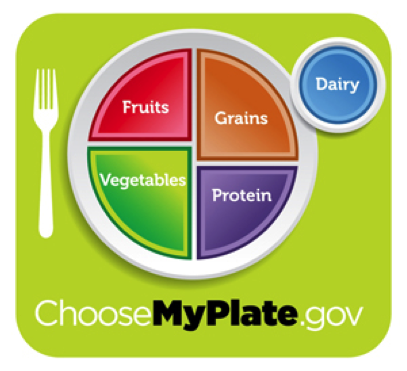 A new food guide plate was launched in 2011 to provide individualized dietary recommendations based on the 2010 Dietary Guidelines for Americans. This replaces the previous Food Guide Pyramid.
A new food guide plate was launched in 2011 to provide individualized dietary recommendations based on the 2010 Dietary Guidelines for Americans. This replaces the previous Food Guide Pyramid.
These are general recommendation for an adult consuming 2000 calories per day.
|
Vegetables: at least 2½ cups of vegetables. Each week select from all 5 vegetable subgroups: dark green, orange, legumes, starchy vegetables, and others.
Fruit: at least 2 cups fruit
Milk: up to 3 cups low-fat or fat-free milk products
Protein: 5-6 oz of lean meats, beans, legumes, etc. |
An important distinction to make here is the difference between portion size and serving size. People often consume a single portion that actually contains multiple servings. People's concepts of appropriate portion size have expanded over time (along with their waist line).
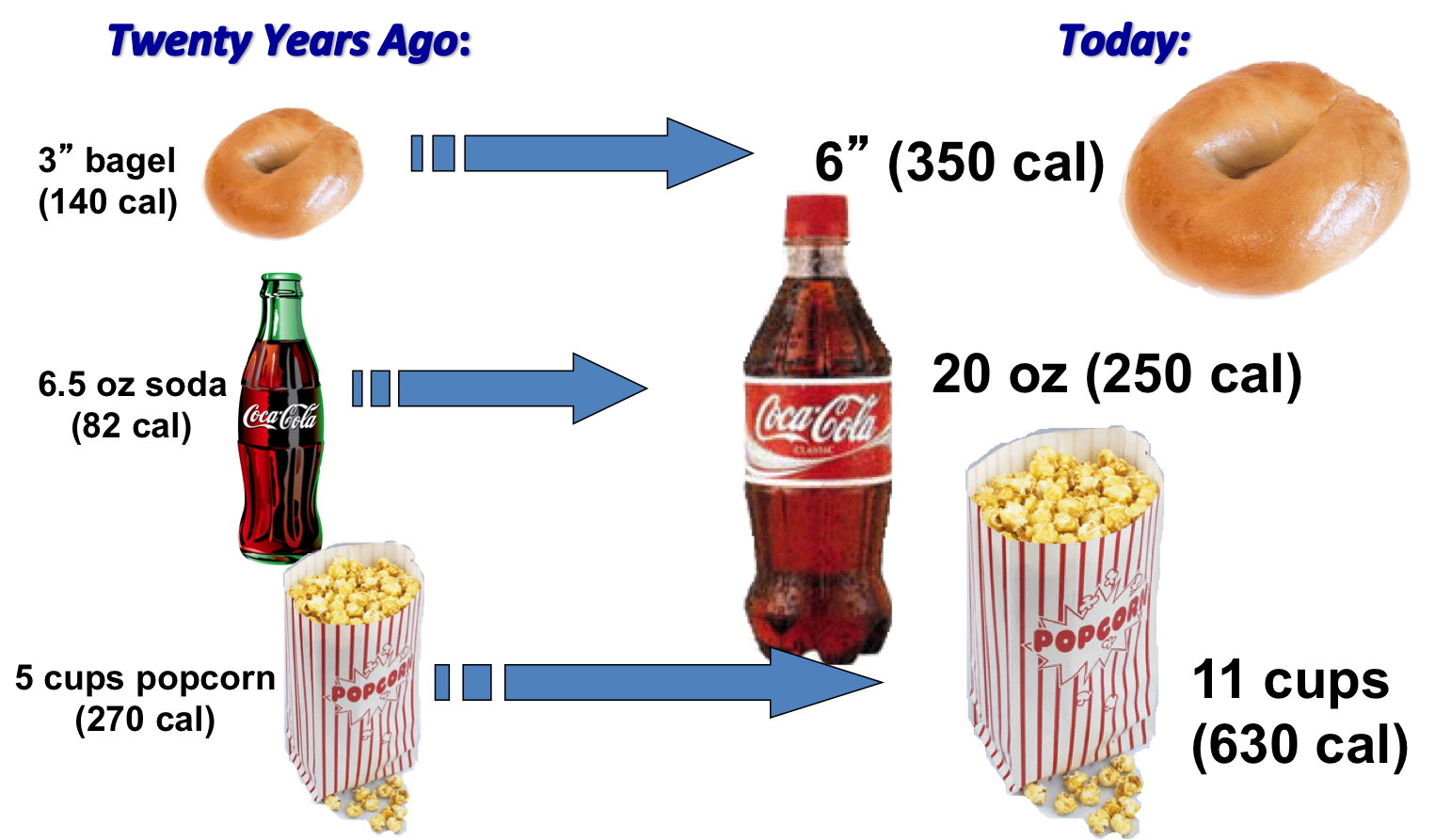
For More Information:
- Evidence-based lifestyle recommendations to promote health and prevent disease: Consumer Brochure
- Recommendations for specific groups such as children and pregnant women: Summary of 2010 Guidelines
- Recommended Dietary Plans to follow USDA Guidelines:
 Grains: at least 3 oz. of whole-grain products (one slice of whole wheat bread = 1 oz.)
Grains: at least 3 oz. of whole-grain products (one slice of whole wheat bread = 1 oz.)